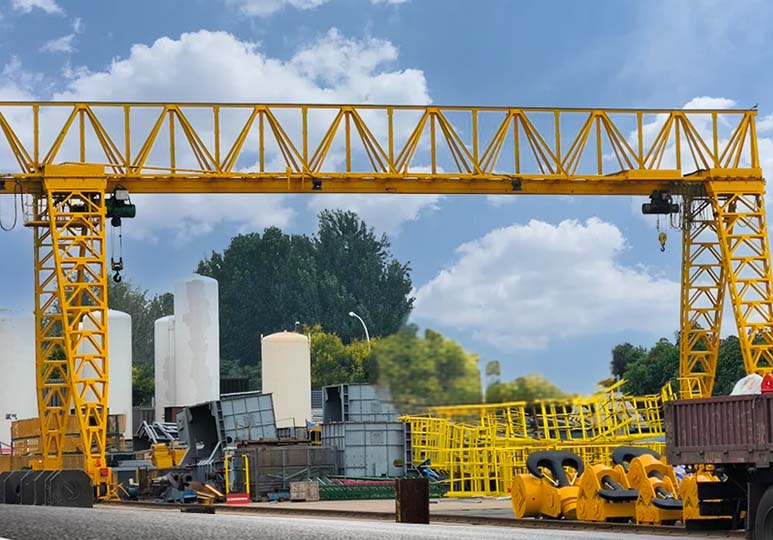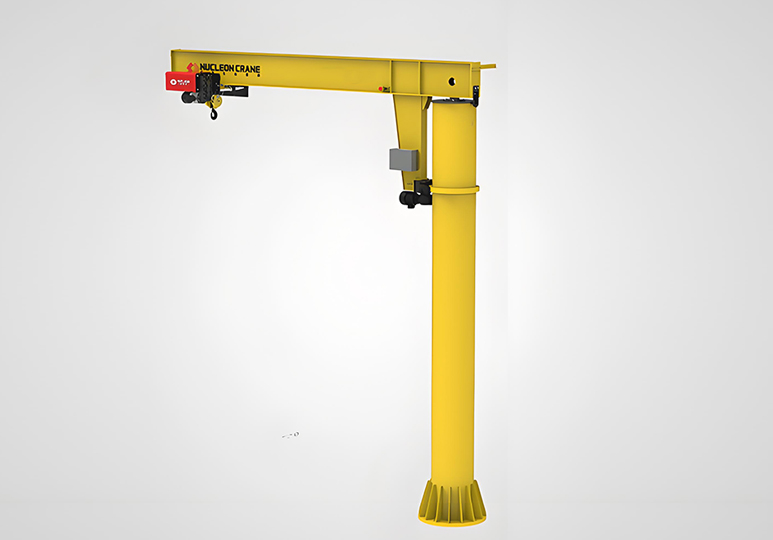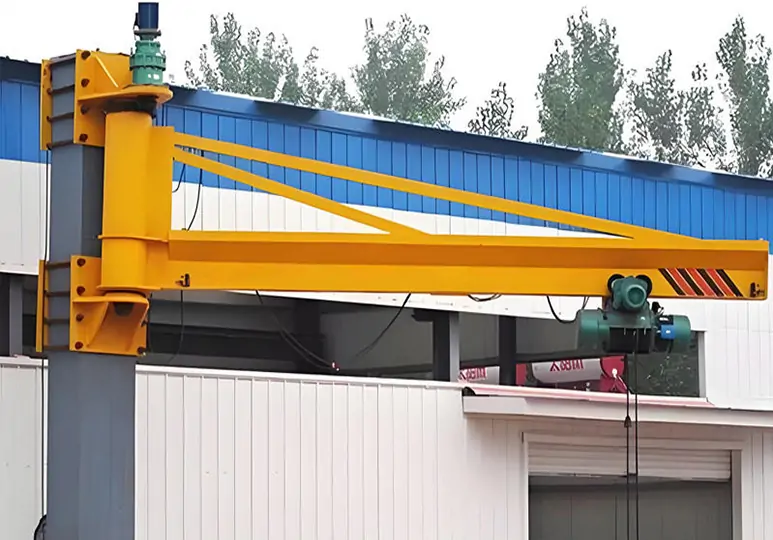The overhead crane is an indispensable heavy material handling equipment in modern industry. It has a unique structural design and strong load capacity, widely used in manufacturing, construction, warehousing and logistics, and other fields. It can efficiently and safely lift and transport heavy materials. In this article, we will discuss the overhead crane system, parts, different types of overhead cranes, and related operation and maintenance points, while providing you with practical advice on buying an overhead crane, including how to select a quality manufacturer and customized solutions.
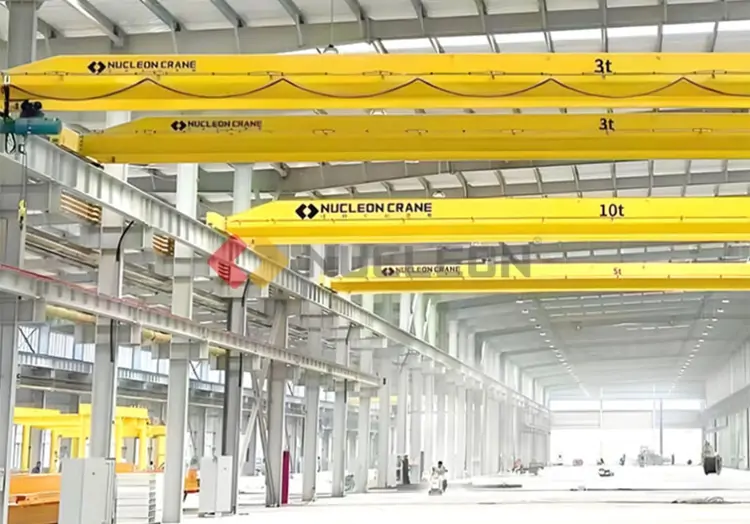
Table of Contents
- ما هي الرافعة العلوية؟
- أنظمة ومكونات الرافعات العلوية
- مقدمة عن أجزاء الرافعات العلوية
- أنواع الرافعات العلوية
- كيفية اختيار وتخصيص الرافعة العلوية؟
- كيفية اختيار مورد رافعة جسرية موثوق بها؟
- كيفية تشغيل الرافعة العلوية؟
- كيفية صيانة الرافعة المتحركة العلوية؟
ما هي الرافعة العلوية؟
The overhead crane, also called a bridge crane or traveling crane, is a type of heavy-duty lifting equipment widely used in industry. Its name comes from its unique structural design: the ends of an overhead crane are supported on tall concrete columns or steel supports, and the overall shape resembles a bridge. These cranes are often used to efficiently lift materials across factories, workshops, warehouses, or yards. About the definition of the overhead crane, please view this article: ما هي الرافعة العلوية؟ التعريف، الأجزاء، الأنواع، الاستخدام، التكلفة
The overhead crane's bridge can run longitudinally along the tracks laid on both sides of the overhead, making full use of the space underneath the bridge for material handling, completely unimpeded by equipment and ground-level space. Due to its large lifting capacity, flexible operability, and wide range of application scenarios, the overhead bridge crane has become one of the most widely used and most numerous lifting equipment in the industrial field.
أنظمة ومكونات الرافعات العلوية
The overhead crane system mainly consists of components such as girders, rails, hoisting devices, trolleys, end girders, control devices, and electrical power systems.
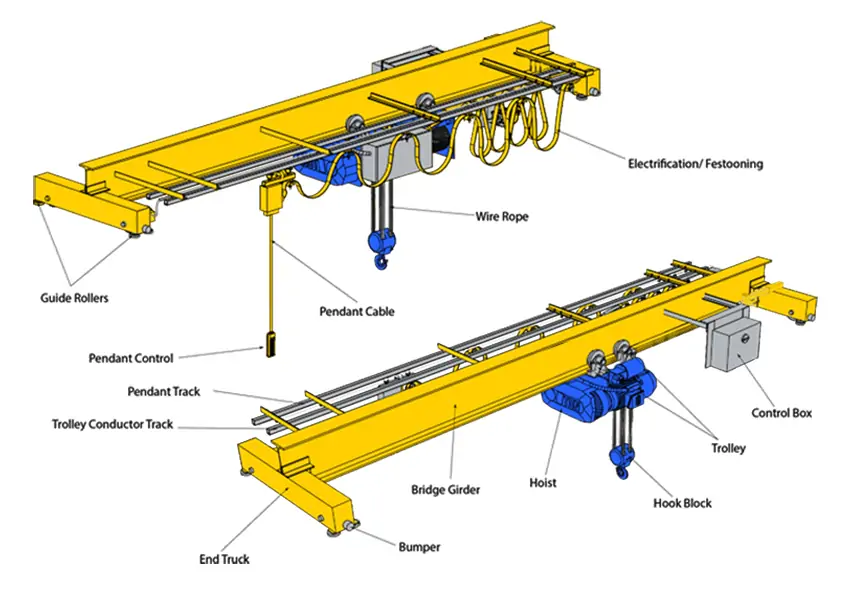
مقدمة عن أجزاء الرافعات العلوية
العارضة
The girder is the main load-bearing structure of an overhead crane, spanning the entire width of the facility. It is responsible for supporting the hoisting device and the trolley, and determines the load-carrying capacity and stability of the crane.
مسار
المسار هو الأساس لتشغيل الرافعة المتحركة العلوية وعادة ما يتم وضعه على الهيكل العلوي على جانبي المنشأة. تتحرك آلية حركة العارضة طوليًا على طول المسار، مما يتيح للرافعة العمل بمرونة على كامل منطقة العمل.
جهاز الرفع
The hoisting device is the core component of an overhead crane and is used to lift and lower loads. It usually consists of a motor, wire ropes, pulleys, and hooks and is capable of precisely controlling the height and position of the load.
عربة
A trolley is a mobile mechanism installed on the bridge frame, carrying the hoisting device and moving laterally along the beam. Through the operation of the trolley, the crane can precisely position the load within the range covered by the bridge.
عوارض النهاية
توجد العربات الطرفية عند طرفي العارضة وتدعم هيكل الجسر بالكامل وتربط آلية حركة العارضة. يضمن تصميم العربات الطرفية قدرة الرافعة على التحرك بسلاسة على طول المسار مع تحمل وزن الحمل.
وحدة التحكم
النظام المستخدم لتشغيل الرافعة، بما في ذلك أدوات التحكم في الوصلة (أدوات التحكم اليدوية)، أو أدوات التحكم عن بعد، أو أدوات التحكم في الكابينة.
نظام الطاقة الكهربائية
Provides power support for the crane, including motors, cables, and power distribution units.
أنواع الرافعات العلوية
يمكن تقسيم الرافعات العلوية إلى أنواع مختلفة وفقًا لقدرات الرفع المختلفة والهياكل وسيناريوهات التطبيق. على وجه التحديد على النحو التالي:
مقسمة حسب قدرة الرفع
1-20 tons light-duty overhead travelling crane
مناسبة لورش التصنيع الصغيرة والمستودعات وما إلى ذلك، بسعة رفع تتراوح بين 1 و20 طنًا. إنها صغيرة الحجم ومرنة، ويمكنها التعامل بكفاءة مع مهام مناولة المواد الصغيرة والمتوسطة الحجم، مما يجعلها مثالية للاستخدام في البيئات الصناعية الخفيفة.
Heavy-duty overhead travelling crane over 20 tons
تُستخدم بشكل أساسي في الصناعات الثقيلة مثل مصانع الصلب والمسابك وأحواض بناء السفن وما إلى ذلك، مع قدرة رفع تزيد عن 20 طنًا. هيكلها القوي وآلية الرفع القوية تمكنها من التعامل بأمان وثبات مع الأحمال الثقيلة للغاية وتلبية متطلبات العمليات عالية الكثافة.
مقسمة حسب التصميم الهيكلي
رافعة علوية ذات عارضة واحدة
بفضل تصميم الجسر الفردي، المدعوم بشاحنات طرفية، فهو مناسب لاحتياجات الرفع من 1 إلى 32 طنًا. وتكمن ميزته الأكبر في كفاءته الاقتصادية. ويُستخدم على نطاق واسع في التصنيع والخدمات اللوجستية والسيارات وغيرها من الصناعات، وهو مناسب بشكل خاص لسيناريو الميزانية المحدودة وكثافة العمل المعتدلة.
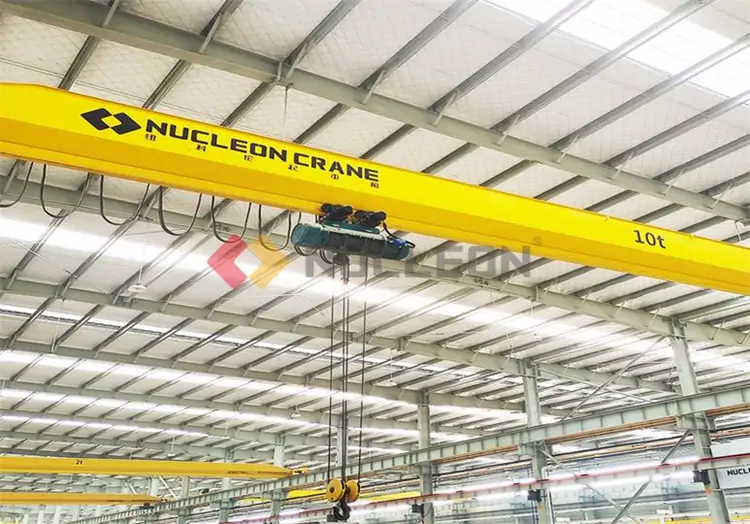
رافعة علوية ذات عارضة مزدوجة
Equipped with a double bridge structure for greater stability, suitable for 5-800 ton large loads or large span operations. Commonly used in construction, mining, and heavy manufacturing industries, they can efficiently handle complex and high-intensity lifting tasks.
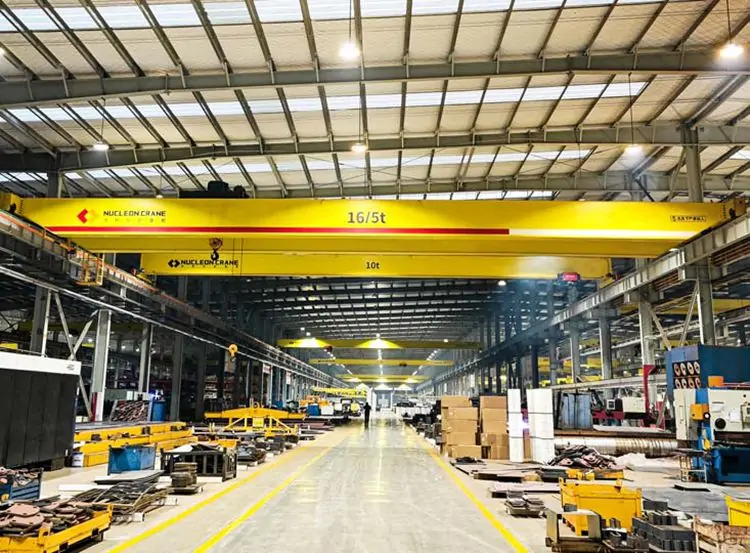
رافعات علوية معلقة من الأسفل
Suspended from a ceiling structure to save floor space, they are suitable for workshops, assembly lines, and storage areas where space is limited. Their flexible design is often used in locations where a free-standing crane cannot be installed.
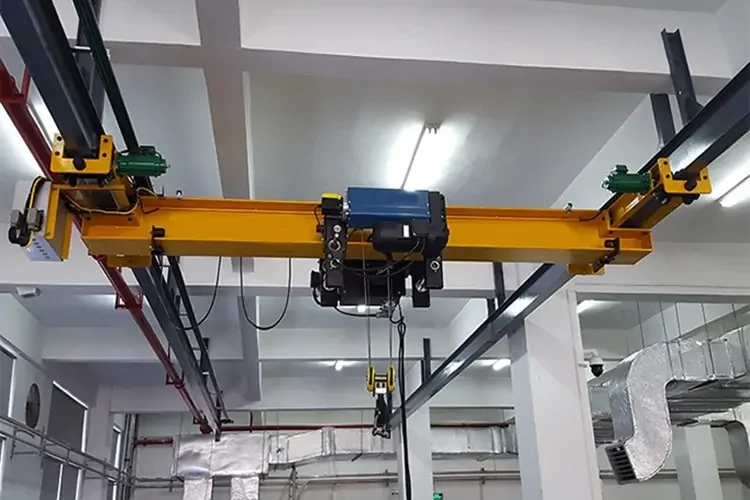
مقسمة حسب التطبيق
رافعات ورقية علوية
Designed for the paper industry, they are equipped with special attachments and lifting devices for efficient handling of paper rolls, pulp, and other materials.
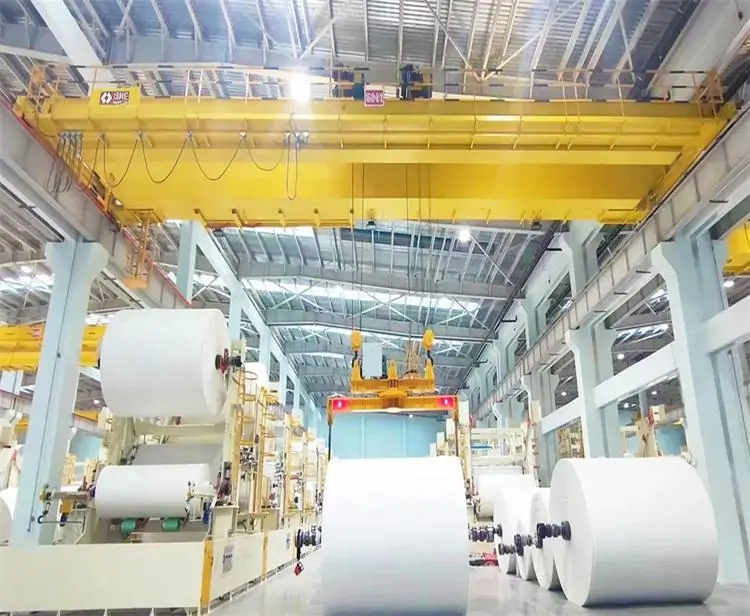
رافعات علوية ذات مغرفة
Used in steel mills and foundries for conveying liquid metal, pouring and mixing molten iron during the smelting process, e.g., for lifting and conveying ladles of liquid steel. The use of heat-resistant materials and safe design allows for safe operation at extreme temperatures. Customized double and quadruple girder designs are available depending on lifting requirements.
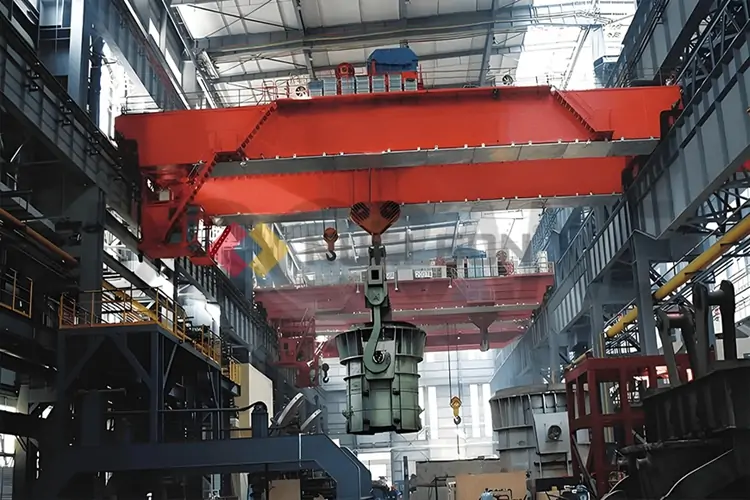
الاستيلاء على الرافعات العلوية
Equipped with a grapple attachment for handling bulk materials such as sand, gravel or waste. Widely used in the mining, construction, and waste management industries to provide efficient loading and unloading solutions.
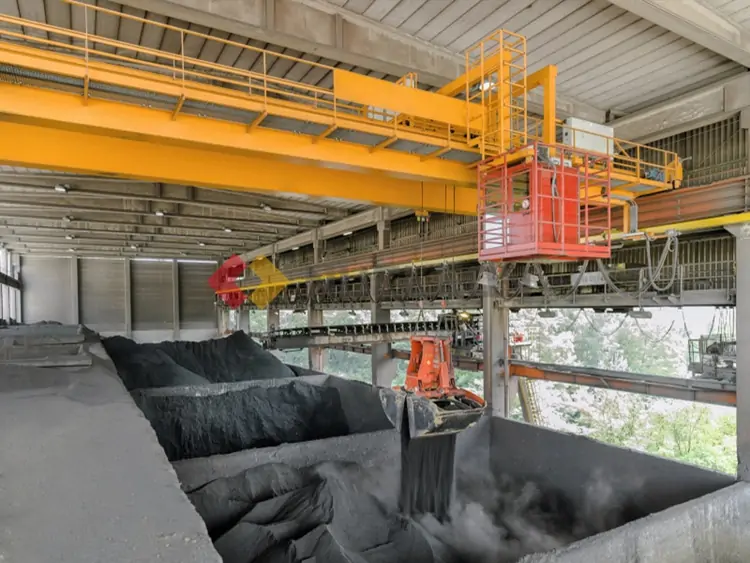
الرافعات العلوية الكهرومغناطيسية
Uses electromagnetic force to move ferrous materials, commonly found in scrap yards, recycling centers, and the steel industry. Their magnetic design allows for quick sorting and movement of metal materials, enhancing operational efficiency.
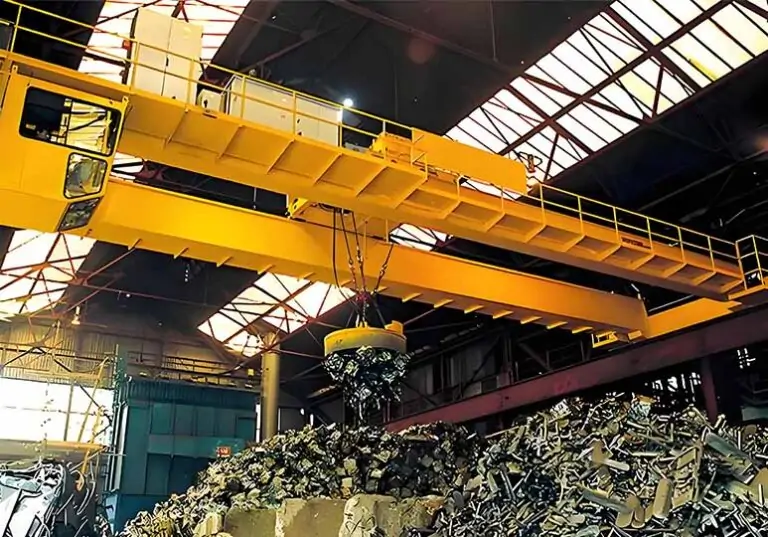
رافعات علوية مقاومة للانفجار
Suitable for flammable and explosive environments, equipped with explosion-proof components and safety features to ensure safe operation in hazardous locations. Widely used in the chemical and petroleum industries.
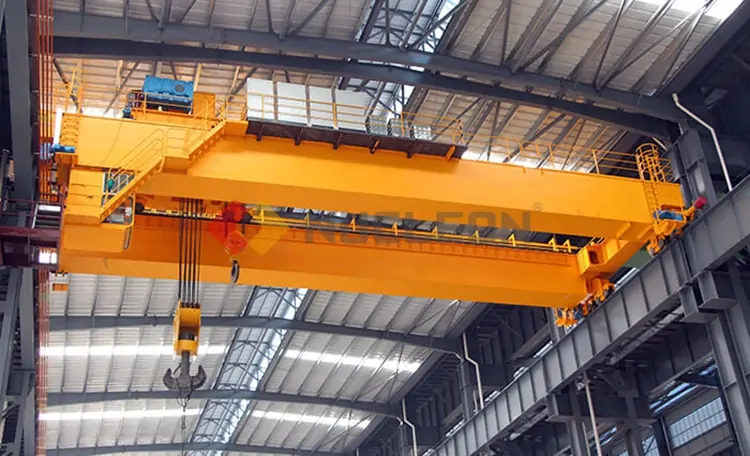
رافعات استعادة الطاقة
Tailor-made for the waste-to-energy (WtE) and biomass industries, equipped with special grabs, they can efficiently complete tasks such as handling, mixing, stacking, weighing and blending of waste materials. Typically, in a twin configuration, two grab cranes of the same size are installed to work in tandem to ensure that the waste material enters the boiler uniformly to improve combustion efficiency.
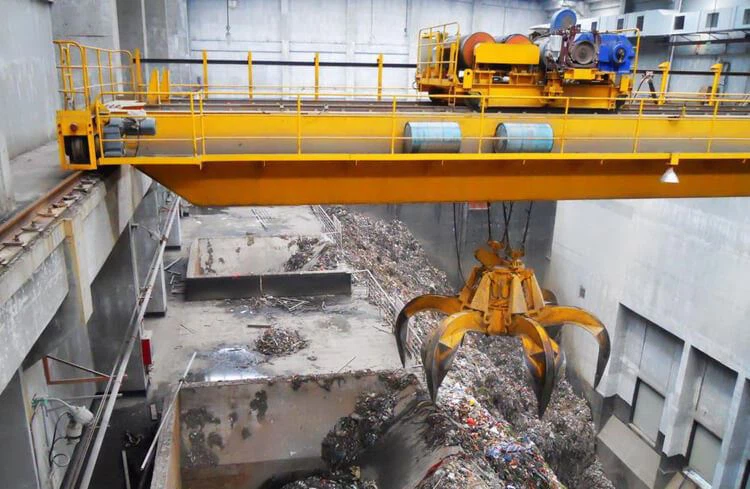
كيفية اختيار وتخصيص الرافعة العلوية؟
عند اختيار رافعة علوية، يجب مراعاة العوامل الرئيسية التالية بعناية:
- قدرة التحميل:
أولاً، حدد أقصى سعة تحميل تحتاجها الرافعة للتعامل معها، مع الاحتفاظ بمساحة لتوسع الأعمال في المستقبل. تأكد من أن المعدات ستكون قادرة على التعامل مع متطلبات العمل الحالية والمستقبلية. - مدى الامتداد:
يشير الامتداد إلى المسافة بين قضبان الرافعة أو الدعامات، والتي تؤثر بشكل مباشر على مساحة تغطية المعدات. وفقًا للتخطيط الفعلي للمصنع أو منطقة العمل، اختر الامتداد المناسب لضمان قدرة الرافعة على تغطية منطقة العمل بكفاءة، مع تجنب إهدار المساحة. - ارتفاع الرفع:
يحدد ارتفاع الرفع مدى تشغيل الرافعة في الاتجاه الرأسي. وفقًا لارتفاع المبنى ومتطلبات التشغيل، احسب بدقة ارتفاع الرفع المطلوب لضمان وجود مساحة كافية للرأس لمناولة المواد وتجنب التعارض مع هيكل المصنع. - بيئة التشغيل:
تتطلب بيئات التشغيل المختلفة متطلبات مختلفة لأداء الرافعة. يجب مراعاة درجة الحرارة والرطوبة وتركيز الغبار وعوامل أخرى، بالإضافة إلى لوائح السلامة المتعلقة بالصناعة. على سبيل المثال، في الأماكن القابلة للاشتعال والانفجار، يجب اختيار الرافعات المقاومة للانفجار لضمان السلامة. - نظام التحكم:
يعد وضع تشغيل الرافعة أيضًا عاملًا مهمًا في الاختيار. تشمل طرق التحكم الشائعة التحكم في المعلقات والتحكم اللاسلكي والتحكم في الكابينة. اختر نظام التحكم الأكثر أمانًا وكفاءة وفقًا للاحتياجات الفعلية. - الصيانة والخدمة:
عند اختيار الرافعة، عليك أيضًا مراعاة احتياجاتها للصيانة ودعم الخدمات المحلية. تأكد من أن المورد قادر على تقديم الدعم الفني وخدمات الصيانة في الوقت المناسب لضمان التشغيل المستقر للمعدات على المدى الطويل.
كيفية اختيار مورد رافعة جسرية موثوق بها؟
When choosing an overhead crane supplier, it is recommended to prioritize manufacturers with rich project experience who can provide high-quality products and services. Make sure the supplier has international quality standard certifications, such as ISO 9001 and CE certification. In addition, suppliers can be asked to provide reference cases from past customers to ensure that they have sufficient expertise in the design, manufacture, and installation of overhead bridge cranes to ensure the safety, reliability and efficiency of the equipment.
كيفية تشغيل الرافعة العلوية؟
- التفتيش قبل بدء التشغيل
Before operating the overhead crane, the operator must perform a thorough equipment inspection. First, make sure that the crane's power supply is connected properly and that the control panel has no abnormal display. Next, check whether there is any wear or damage to the wire rope, hook, pulley, and other key components to ensure that they are in good condition. At the same time, check whether there are any obstacles on the track to ensure that the crane's running path is clear. Finally, test each control button and emergency stop device to ensure normal function. - إجراءات التشغيل:
عند تشغيل الرافعة العلوية، يجب على المشغل الوقوف في غرفة التحكم لضمان رؤية واضحة.
After starting the crane, carry out a no-load test run first to make sure that the operation of the trolley, trolley, and hoisting mechanism is smooth and without any abnormality.
عند رفع البضائع، يجب على المشغل بدء آلية الرفع ببطء لتجنب اهتزاز البضائع.
عند تحريك العربة أو الترام، من الضروري الحفاظ على سرعة ثابتة وتجنب التوقف والبدء بشكل مفاجئ لمنع تأرجح البضائع أو خروج الرافعة عن السيطرة.
أثناء عملية الرفع، يجب على المشغل مراقبة حالة البضائع دائمًا للتأكد من أن الخطاف متصل بالبضائع بقوة.
After completing the lifting, park the crane in the designated position, turn off the power, and make daily maintenance records.
كيفية صيانة الرافعة المتحركة العلوية؟
- الصيانة اليومية
Daily maintenance of overhead cranes is the key to ensuring their long-term stable operation. At the end of each day's work, the operator should clean the dust and debris on the surface of the crane, especially the rail and pulley parts, to prevent the accumulation of dust from affecting the operation. At the same time, check the wire ropes for broken wires, deformation, or wear, and lubricate or replace them if necessary. For the electrical system, check cables and terminals regularly to ensure there is no looseness or aging. In addition, operators should regularly test limit switches and emergency stops to ensure sensitivity and reliability. - الصيانة الدورية
In addition to routine maintenance, overhead cranes require regular professional maintenance. Every three months or according to the frequency of use, the mechanical parts of the crane should be fully lubricated, including bearings, gears, and chains, etc., in order to reduce wear and noise. Every six months, the structure of the crane needs to be inspected in detail by professional technicians, especially whether there are any cracks or deformations in the welds of the main girder, end girder, and outriggers. For the electrical system, a comprehensive inspection should be carried out once a year, including the performance test of motors, controllers, and sensors, to ensure that they meet the safety standards. Regular maintenance not only extends the service life of the crane, but also effectively prevents sudden breakdowns and ensures operational safety.
ملخص:
ما سبق يتحدث عن أنواع ومكونات وتشغيل وصيانة الرافعات العلوية. هناك العديد من أنواع الرافعات العلوية لمختلف الصناعات وبيئات التشغيل. سواء كان الأمر يتعلق بمتجر صغير وخفيف أو موقع صناعي كبير وشديد التحمل، فإن كل نوع من الرافعات له ميزاته وفوائده الفريدة. من خلال فهم ميزات وسيناريوهات الاستخدام لكل رافعة، يمكنك اتخاذ خيار أكثر صحة لحل الرفع.
للحصول على حلول رافعة علوية مخصصة، فلا تتردد في الاتصال بنا. اتصل بناسيقدم لك فريقنا المتخصص نصائح شخصية ويساعدك في اختيار المعدات الأكثر ملاءمة.
مقالات ذات صلة
- الفرق بين الرافعات الجسرية ذات العارضة الواحدة والرافعات الجسرية ذات العارضة المزدوجة
- ما هي الرافعة العلوية؟ التعريف، الأجزاء، الأنواع، الاستخدام، التكلفة
- مقارنة بين رافعة الجسر ورافعة الجسر العملاقة: كيفية الاختيار؟
- مقدمة عن رافعة الجسر ذات الإطار الصندوقي من شركة MG
- رافعة جسرية ذات عارضة واحدة من LD
- مقدمة موجزة عن الرافعات الكهربائية CD1 وMD1


